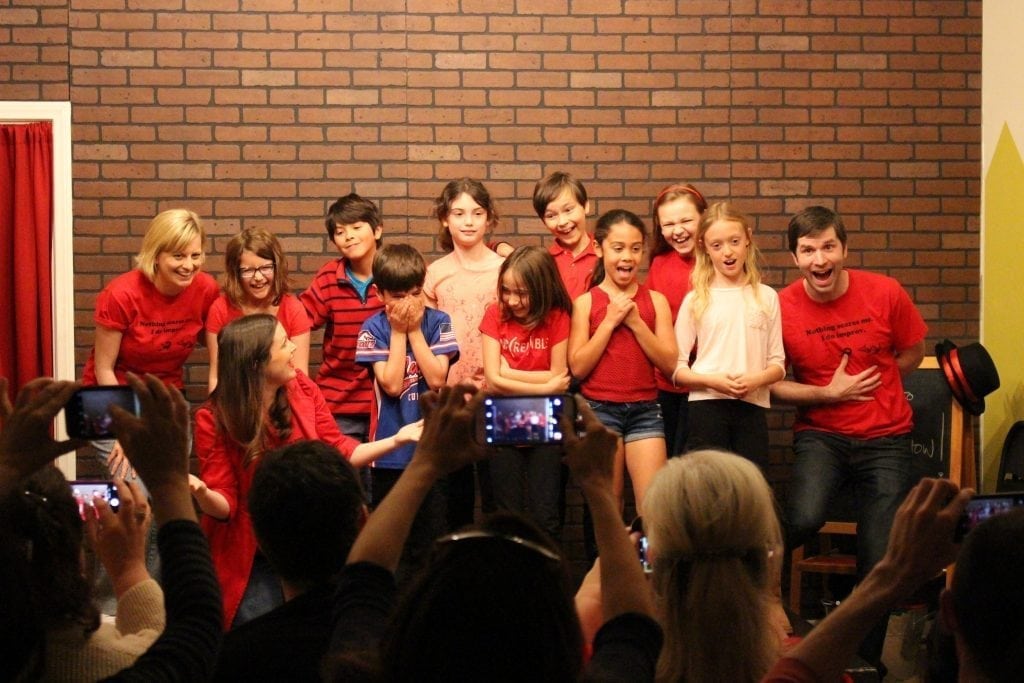
Katy Chase, co-owner of Studio LOL, says kids should feel relaxed over the summer, but not “abandon all learning and thinking.” PHOTO COURTESY STUDIO LOL
Imagine, for a moment, that you are on “Jeopardy!” Host Alex Trebek rattles off the answer to the question you need to provide: “This phenomenon results in two to three months of academic learning loss in school-age children.”
You punch your buzzer and light up your podium. “What is summer brain drain?” you yell, triumphant. You are right. While summertime represents that much-anticipated season of rest and riotous fun for kids – sleeping late, basking in waves and vitamin D, indulging in screen time, letting rollercoasters shake equations from the brain – it can also bode the wrong kind of results for students each year. This is the period, also called “summer learning loss” and “summer slide,” when students lose chunks of the knowledge and skills their teachers helped them build during the school year.
I know firsthand. I taught high school English literature and composition for a few years, and can attest to the reality of summer brain drain. Each fall, some students I had taught the previous year would end up with me for the next grade. As they wrestled with paying attention and turned in essay drafts fraught with errors, I would sigh. “Come on, guys – you remember what a claim is, and you certainly know better than to lowercase proper nouns!”
But summer brain drain carries heavier implications than teacher exasperation. Consider these long-term impacts, published by the National Summer Learning Association (NSLA):
- Most students lose two months of mathematical skills every summer, and low-income children typically lose another two to three months in reading.
- Students who fall behind over the summer are less likely to graduate from high school or go on to college.
- Nine in 10 teachers spend at least three weeks re-teaching lessons at the start of the school year.
Kim Cullen, senior program manager at Stratford School, says students start the school year at a disadvantage. “Summer brain drain is recognizable as early as first grade,” she says. “The slide can compound as the child grows older. By the time a student is in sixth grade, a consistent summer slide can cause a student to be two years behind their peers.”
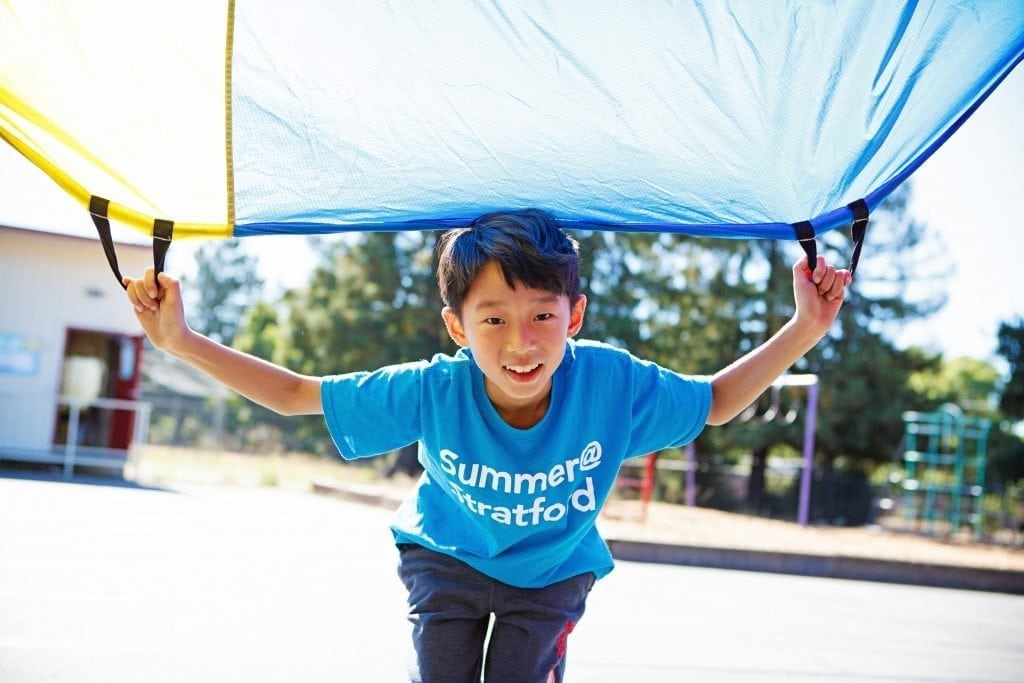
Stratford School offers summer programs for children as young as 2 ½ through those entering eighth grade. PHOTO COURTESY STRATFORD SCHOOL
The good news is that you can outwit summer brain drain – or at least reduce it. If, like many parents across the L.A. region, you are planning to enroll your children in summer camp, look for camps that provide learning opportunities to keep students’ brains fresh. The NSLA reports that elementary school students with high levels of attendance (at least five weeks) in voluntary summer learning programs experience benefits in math and reading.
It’s only February, so you may just be recovering from winter break. Use this time, though, to research summer camps and apply for early-bird specials and scholarships.
Fun is Essential
But hold your horses. Before you go off the deep end, ready to nix your kids’ notions of an easy-breezy summer, remember that fun has its purpose, too. It should not be viewed as the enemy – even in light of the dreaded summer slide. Those hot months should be a time of leisure, a time to get away from the intensity of the hectic school year, to let the brain, body and spirit air out a bit.
“Children need to grow through fun, play and relaxation,” says Cullen. “It is easy to over schedule a child in today’s fast-paced world, [but] it is just as important to allow a child to be a child. Unstructured, unplugged time allows children to explore their imagination and, hopefully, get outside.”
Finding a Balance
Throughout L.A., a variety of organizations offer summer camps centered around building a particular skill. The region doesn’t run short on science- and coding-camp opportunities that integrate math skills – from iD Tech Camp (idtech.com) to Code Rev (www.coderevkids.com). And programs such as 826 LA (www.826la.org), Writopia (www.writopialab.org) and Cal State L.A. (through its Young Writers’ Camp, www.calstatela.edu) provide spaces for students to hone their language arts skills.
If you’re looking for a well-rounded learning experience for your kids, look for those that weave learning with recreational and creative activities that your kids crave, such as music, art projects, field trips and cooking.
Evelyn Rudie, co-artistic director of the Santa Monica Playhouse (www.santamonicaplayhouse.com), says her summer camp is based on learning through fun. “We have discovered that when a child’s interest is engaged, it doesn’t feel like learning,” Rudie says. “We find that using drama for cross-curricular activities really helps young people to learn and to focus, not just in the weeks following the summer, but throughout the school year. Using drama to study history, to study a chapter in a book, to study current events, helps students to process visually, aurally, and especially kinesthetically, and by using all three processes, they are kept engaged and interested and no one is left out because of their particular process of learning.”
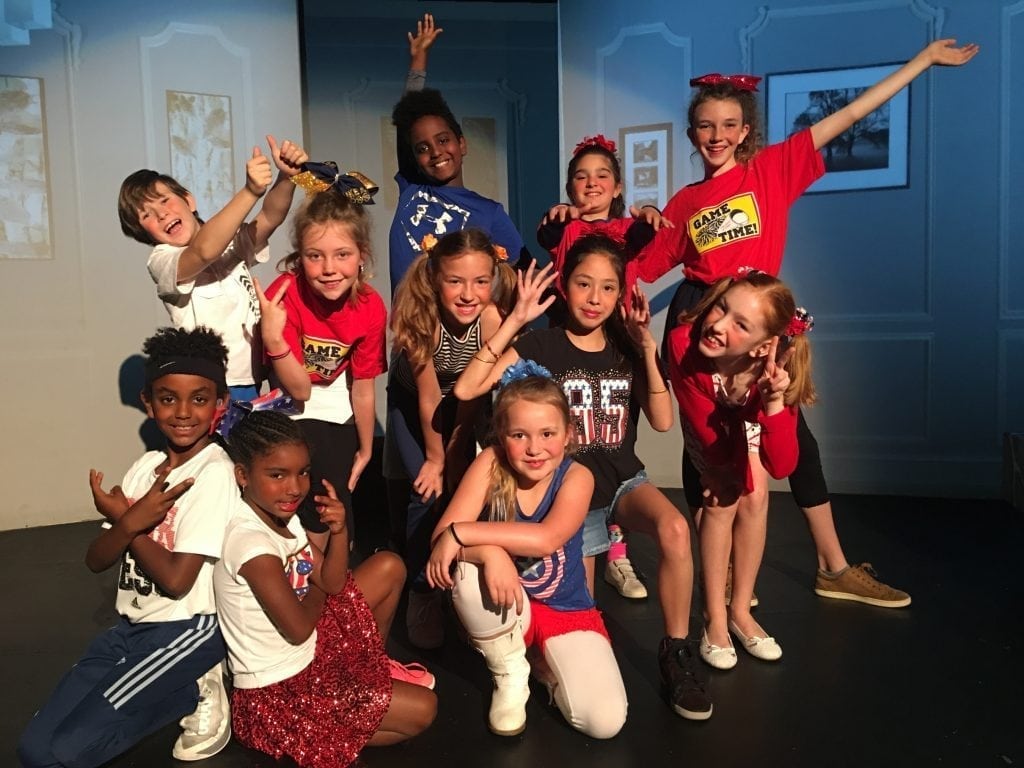
Children who attend arts programs such as those at the Santa Monica Playhouse also gain study skills, says Co-artistic Director Evelyn Rudie. PHOTO BY CYDNEE MOORE
Like the Playhouse, other arts camps insist that engaging students’ imaginations during the summer is fertile ground for academic learning. “The Summer Program at Idyllwild Arts is a way for kids, ages 5 to 18, to build competencies, such as creativity and innovation, that may not be taught or taught as fully during a student’s regular education,” says Mark A. Davis, director of summer and auxiliary programs at Idyllwild Arts Foundation (www.idyllwildarts.org).
Katy Chase, co-owner of Studio LOL (www.studioLOL.com), says parents find that improv camp “offers a nice balance between learning and laughing for the summer months, when kids should feel relaxed, but not completely abandon all learning and thinking.”
And Rudie says that the more students are involved in the arts during the summer or year-round, the more their study skills are enhanced. “When a student participates in an arts program in the summer, there is no ‘summer learning loss,’” she says. “If anything, there is a summer learning gain, which makes going back to school a delight, rather than a challenge.”
Start Summer Learning Habits Early
If you start exposing kids to summer learning experiences as soon as possible, it can become a good habit you hope they never break.
Stratford School (www.stratfordschools.com) offers programs for children from age 2½ to those entering eighth grade. Camp offerings can include STEM classes, writing and math workshops and creative and performing arts. “Our camps for our younger students are four and three weeks long, [and] this allows enough time for our students to acclimate to a new environment,” says Cullen. “Our elementary and middle school students may choose from a variety of two-week long camps, which are project-based and focus on keeping their academic skills fresh while solving real-world problems.”
Nor Oropez, director of Community and Public Programs in the Education Department at the California Science Center, says courses there are offered for kids who will begin preschool in the fall. “We have mommy-and-me or guardian-and-me classes – basically getting them ready for preschool,” Oropez says. “They’re exploring their bodies, understanding what chemistry is.”
How, one might ask, do you teach chemistry to a 4-year-old? “You make it really simple as far as observation skills mostly,” says Oropez, who has a degree in biology. “You start with one or two ingredients to have them understand what that chemical reaction is. It’s hands-on, very practical.”
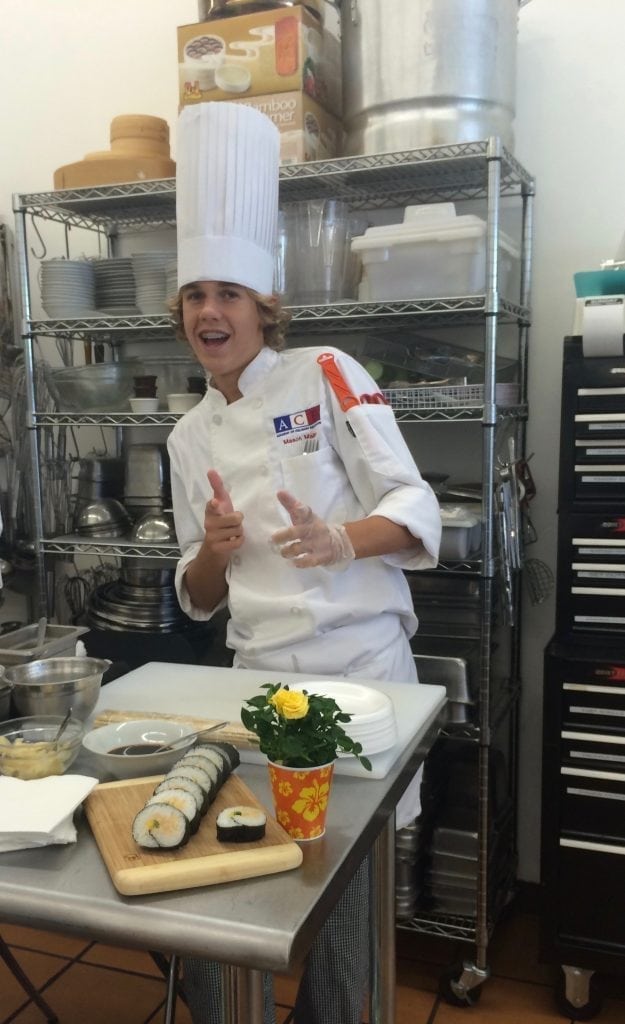
Mason Malina takes advantages of his flexible online-learning schedule to pursue interests such as culinary classes. PHOTO COURTESY RHONDA MALINA
Registration for the science center’s camp (www.californiasciencecenter.org) opens in late February, and scholarship applications open then, too. This year, 1,000 students will be awarded need-based scholarships. Class offerings will include exploring chemistry in slime and explosions for early elementary students, design and civil engineering for kids headed to middle school (including concepts such as how to build a building to withstand an earthquake), life camera science (think satellites, the Hubble), marine biology and drones. Coursework is aligned with the Next Generation Science Standards, and the science center benefits from working with its own professionals, sponsors and the science department at Loyola Marymount University.
“One thing we try to have [our instructors] do is to turn the classroom around,” says Oropez. “The traditional way is, ‘I’m going to tell you what’s going to happen, then you’ll do an experiment that will prove what I just said.’ Here, students get the assignment first, then learn by doing. We’re really good at teaching kids to think like scientists and get them excited about science. To get them familiar with the terms.”
The Flexible Brain
As a virtual learner since he was in fourth grade, Mason Malina, an 11th grader at California Connections Academy, has grown used to finding a balance between learning and play – throughout the year. For this straight-A student, there is not a huge gap between summer and fall learning. However, the flexibility he has in doing his coursework online and meeting virtually with his teachers takes some getting used to. “Going from having the installed rigor of traditional school to having to put that structure in for yourself is a challenge,” Malina says. “Once I did make that transition, it was amazing. I can get ahead, which is wonderful.”
His ability to set his schedule has allowed him to pursue other interests – a black belt in taekwondo, competitive swimming, culinary classes. To keep his brain active during summer breaks, Malina has participated in the nonprofit Schooling for Life (www.schoolforlife.org), which provides extracurricular activities, seminars and domestic and international travel with other students and top university professors. “We’ve gone to Israel to study history, to England to study the Industrial Revolution,” says Malina.
He also takes classes at Los Angeles Valley College. “When I get back into school, especially my history class, there will be a lot of things I’ve already learned,” he says. “For me, it’s more of a mindset. I try and work as hard as I can so I can finish summer school and academic work so that I do have a little bit more time to hang out with friends.”
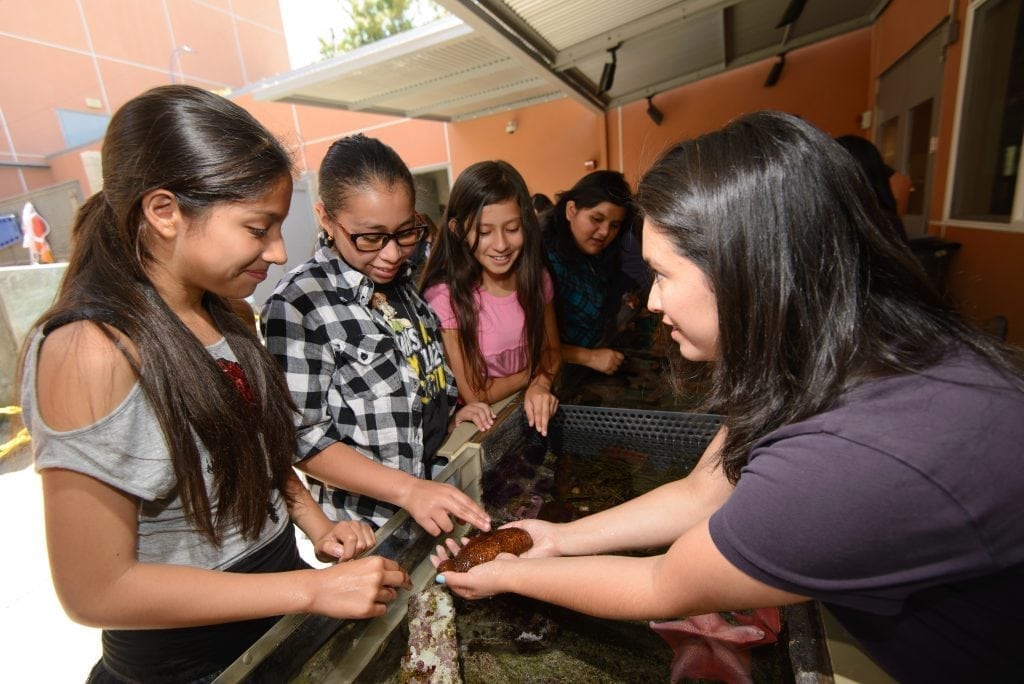
Some workshops at the summer science camp at the California Science Center align with the Next Generation Science Standards. PHOTO COURTESY CALIFORNIA SCIENCE CENTER
His mature approach to balancing learning and play began early. “He said, ‘I want to do something for the summer, but I don’t want to just go to camp and run around,’” says Malina’s mother, Rhonda.
In whatever ways your family chooses to balance summer camp fun with learning, your kids’ teachers will be grateful. Meagan VanDeventer, who teaches art at California Connections Academy, says teachers and administrators do as much as possible to give students and parents suggestions on how to keep learning strong during the summer months, including reading lists, online worksheets at blog.connectionsacademy.com and an online message board.
VanDeventer recommends summer camps that weave learning and fun. But even before that last day of school, she says, teachers can help guide their students’ summers. “I think the best thing is to frontload students and families regarding summer loss. Educate them on why it is important,” says VanDeventer. “Be really clear before going on summer break or any extended break about what the downfall of not learning over the break can be.”
Cassandra Lane is Managing Editor of L.A. Parent.

























